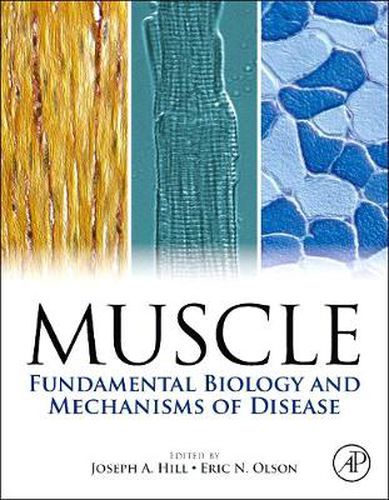Readings Newsletter
Become a Readings Member to make your shopping experience even easier.
Sign in or sign up for free!
You’re not far away from qualifying for FREE standard shipping within Australia
You’ve qualified for FREE standard shipping within Australia
The cart is loading…






A valuable study of the science behind the medicine, Muscle: Fundamental Biology and Mechanisms of Disease brings together key leaders in muscle biology. These experts provide state-of-the-art insights into the three forms of muscle–cardiac, skeletal, and smooth–from molecular anatomy, basic physiology, disease mechanisms, and targets of therapy. Commonalities and contrasts among these three tissue types are highlighted. This book focuses primarily on the biology of the myocyte. Individuals active in muscle investigation–as well as those new to the field–will find this work useful, as will students of muscle biology. In the case of hte former, many wish to grasp issues at the margins of their own expertise (e.g. clinical matters at one end; molecular matters at the other), adn this book is designed to assist them. Students, postdoctoral fellows, course directors and other faculty will find this book of interest. Beyond this, many clinicians in training (e.g. cardiology fellows) will benefit.
$9.00 standard shipping within Australia
FREE standard shipping within Australia for orders over $100.00
Express & International shipping calculated at checkout
A valuable study of the science behind the medicine, Muscle: Fundamental Biology and Mechanisms of Disease brings together key leaders in muscle biology. These experts provide state-of-the-art insights into the three forms of muscle–cardiac, skeletal, and smooth–from molecular anatomy, basic physiology, disease mechanisms, and targets of therapy. Commonalities and contrasts among these three tissue types are highlighted. This book focuses primarily on the biology of the myocyte. Individuals active in muscle investigation–as well as those new to the field–will find this work useful, as will students of muscle biology. In the case of hte former, many wish to grasp issues at the margins of their own expertise (e.g. clinical matters at one end; molecular matters at the other), adn this book is designed to assist them. Students, postdoctoral fellows, course directors and other faculty will find this book of interest. Beyond this, many clinicians in training (e.g. cardiology fellows) will benefit.